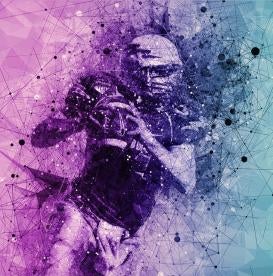The University of Nebraska-Lincoln released a study involving a new equation used to evaluate post-concussion injuries among high school athletes and its corresponding impact on concussion research.
The Nebraska study outlines a new approach for identifying more athletes who play “impaired” on the Immediate Post-Concussion Assessment and Cognitive Testing, or ImPACT. That computerized tool consists of eight subtests that gauge neurocognitive performance. Using the new equation to combine the multiple subtest scores into one evaluative score could make it more difficult for the athlete to “fool” evaluators by providing minimal effort or “sandbagging,” says the recent study.
On impact during a play, if the athlete’s brain forcefully hits against his or her skull, a concussion results. Concussions often cause short-term issues, but may also result in long-reaching consequences such as memory loss and depression. This is especially true if the brain is subjected to repeated trauma.
Athletes diagnosed with concussions take the ImPACT or a similar test to mitigate the risk of re-injury that may occur if they return to play before they have fully recovered. Pre-season administration of ImPACT for athletes establishes a cognitive baseline to be compared against results of post-concussion tests, informing decisions about the athlete’s return to play.
However, if an athlete puts forth minimal effort on the baseline test, the athlete may be cleared to return to playing more quickly after a concussion. “Playing” the ImPACT test in this manner ruins its validity. If the athlete’s brain has not healed completely before return to play, it is more susceptible to further trauma. The likelihood of another concussion increases.
Lead author Kathryn Higgins, a postdoctoral researcher with the Center for Brain, Biology and Behavior at Nebraska said that people administering ImPACT may lack sufficient training in neuropsychological testing, standardized test administration, or data interpretation to avoid returning an athlete to play based on inadequate baseline data. Higgins authored the paper with Arthur Maerlender, director of clinical research at the Center for Brain, Biology and Behavior, and Robert Denney from Neuropsychological Associates of Southwest Missouri. It appeared in the Archives of Clinical Neuropsychology journal.
Conducting an experiment to determine whether a statistical approach would more accurately identify athletes who underperformed on their baseline test, Higgins asked 54 high school athletes to take the ImPACT test twice. For the first test, the athletes were asked to give their best effort, while for the second test they were asked for subtle underperformance. From the results, Higgins was able to identify the four subtests that created the largest disparity in scores. From those subtests, she developed an equation to arrive at a composite score.
By creating the composite score, Higgins was able to correctly identify nearly 100 percent of underperformance cases and almost 90 percent of the best effort cases. Based on prior research, ImPACT flagged suspicious scores on five individual subtests, detecting only 65 to 70 percent of intentional underperformers. Higgins noted that her flags were better because she built them and tested them on the same sample. Nonetheless, Higgins, who conducted the study as part of her dissertation, still believes the equation has strong potential to detect poor effort on baseline testing.
With a goal of improving the assessment of high school athletes, who suffer approximately 300,000 sports-related concussions per year, Higgins said she hoped further research would be conducted to independently evaluate her approach.



 i
i

